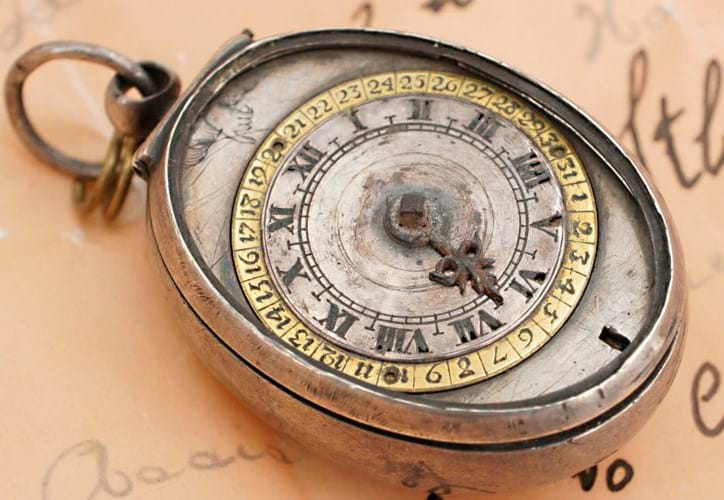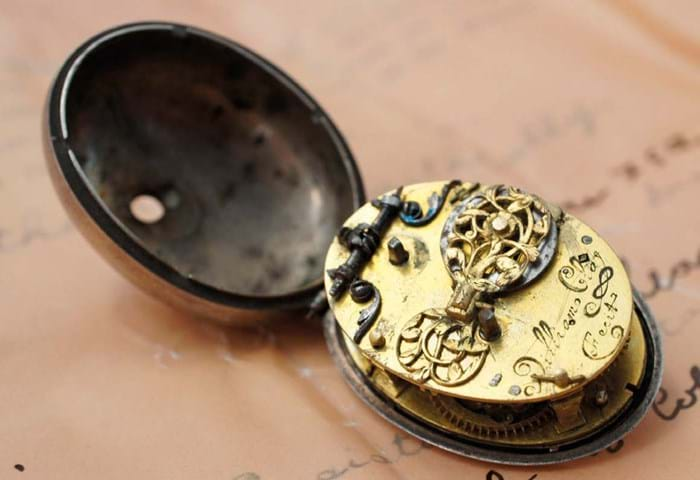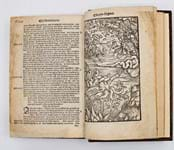
Certainly the watch is of the right period: an oval silver-cased ‘Puritan’ watch of a type developed in England from c.1630 in reaction to the more elaborate timekeepers of the earlier 17th century. The verge movement, with ‘Egyptian’ pillars, is engraved William Clay fecit for a watchmaker recorded as working at King Street, Westminster, c.1646-70.
Long before it became popular to claim to have Cromwell’s watch, three engravings of this timepiece were pictured in the December 1808 issue of the Gentleman’s Magazine accompanied by the text: ‘Mr Urban, I send you views of a Watch formerly belonging to Oliver Cromwell, which he took out of his fob at the siege of Clonmel and presented to the ancestor of the present Colonel Bagwell, whose it now is.’
The Siege of Clonmel, during which the New Model Army suffered losses of perhaps 2500 men, took place in April-May 1650 during the campaign in Ireland.
No watch survives that was definitively owned by the Lord Protector. Even the gold ‘Puritan’ type watch by Robert Grinkin of Fleet Street presented to the British Museum in 1786 by Sir Robert Rich lacks a cast-iron provenance.

Another view of the silver-cased ‘Puritan’ watch with an Oliver Cromwell association sold at Laidlaw in Carlisle for £15,000. It lacks its crystal and the beetle hand is a later replacement but the movement was deemed complete.
In the article Cromwell’s Watch: Somewhere in Time, written by Jane A Mills for the 2004 edition of Cromwelliana, the Journal of the Cromwell Association, 11 watches are identified that claim to have been the property of Cromwell but few stand up to close scrutiny. This ‘Siege of Clonmel’ watch is discussed, although “its present whereabouts is unknown”.
It came for sale at the Laidlaw saleroom on the Escott Business Park, Carlisle, on July 26 from a Cumbrian family. Auctioneer Paul Laidlaw described it as one of the more difficult objects he had ever been asked to value. He believed it to have “the strongest provenance of any watch associated with Cromwell” but recognised that in the absence of fruitful genealogical research its history would always be “a leap of faith”.
“You believe what you want to believe,” he added. “It is impossible to prove but it’s impossible to disprove too.” His guide of £10,000-20,000, adding a modest premium to a watch that was perhaps worth a good four-figure sum without its association, proved spot-on. Underbid by a private collector, it went to a specialist watch dealer at £15,000 (plus 18.5% buyer’s premium).














